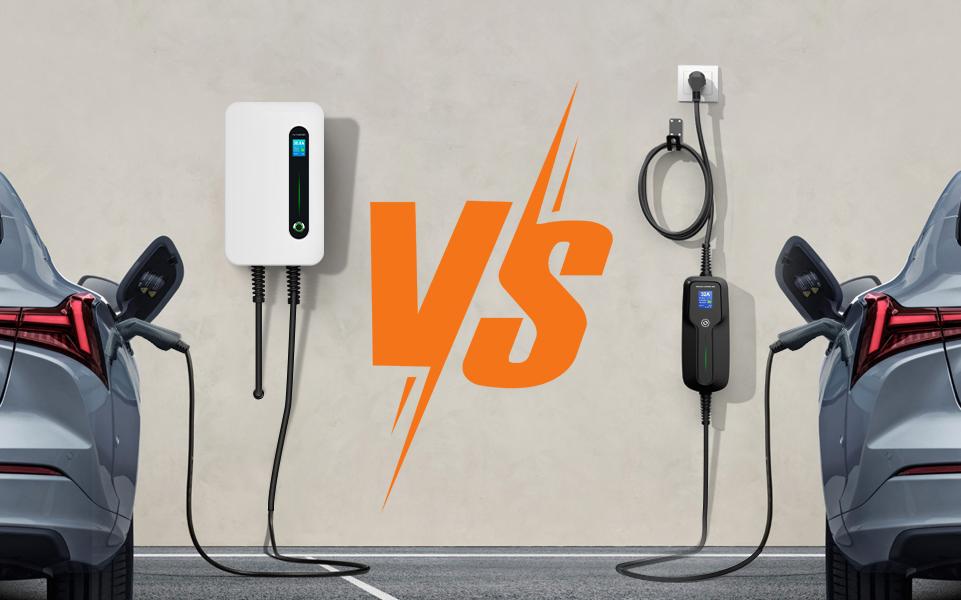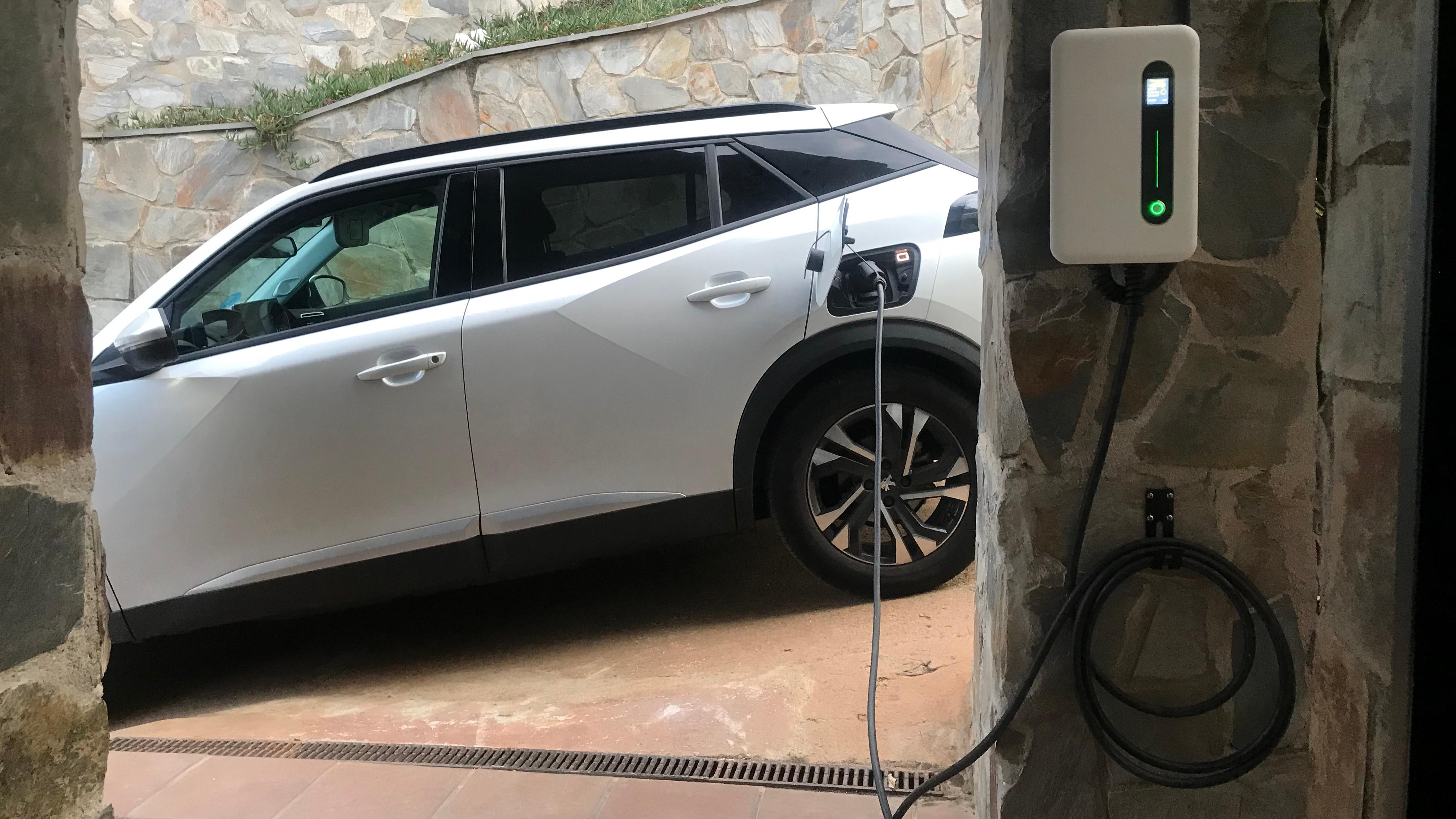Why your electric vehicle(EV) isn’t charging at max rated current? If you've ever plugged in your EV expecting a fast charge, only to find that the charging current is lower than the rated maximum, you’re not alone. Many EV owners experience this issue. Today we’ll discuss the reasons from the perspectives of home circuits, EV chargers, and cars.
1. Home Circuits Limitations🏡
In Europe, home charging speed depends on your home’s electrical system, which includes circuit breakers, wiring, voltage stability, and load balancing. Here’s how each factor can limit charging power:
a) Circuit Breaker Limits & Home Electrical Capacity
- European homes typically have single-phase (230V) or three-phase (400V) electrical setups.
- EV chargers need a dedicated high-amperage circuit (e.g., 16A, 32A).
- Circuit breakers are designed to handle continuous loads at 80% of their rated capacity to prevent overheating.
|
Breaker Rating |
Actual Usable Current (80% Rule) |
Power at 230V (Single-Phase) |
Power at 400V (Three-Phase) |
|
16A |
12.8A |
2.9 kW |
8.8 kW |
|
32A |
25.6A |
5.9 kW |
17.6 kW |
- If your home is limited to 32A single-phase, you can’t reach 11 kW or 22 kW charging speeds.
- If multiple appliances (heaters, air conditioners) are running, the available power for charging is reduced.
b) Voltage Drops Due to Wiring & Connection Quality
- Long cables and thin-gauge wires increase resistance, causing voltage drops that reduce power delivery.
- If your home’s voltage drops from 230V to 220V, your 7.4 kW charger may only deliver 7.1 kW.
c) Load Balancing & Smart Energy Management
- Many homes have a main supply limit (e.g., 40A or 60A total), meaning charging may be automatically reduced if the house nears its capacity.
- Dynamic Load Management (DLM) systems adjust charging power to prevent overloading the grid.
✅Example: If your home has a 40A main supply, and your heating system is using 15A, then your EV charger can only use 25A max, which means 5.75 kW instead of 7.4 kW.
❤️Recommend❤️
MOREC APP-CONTROLLED EV WALLBOX: APP EV charging station can set up a charging schedule to avoid peak charging times, it's convenient and can charge with high power to increase the charging efficiency.
2. EV Charging Station Limitations⚡️
Public and home EV chargers also impose power limits due to technical and environmental factors.
a) Rated Power vs. Actual Power Output
In Europe, AC charging stations use Type 2 connectors, with power ratings:
- 3.7 kW (16A, single-phase)
- 7.4 kW (32A, single-phase)
- 11 kW (16A, three-phase)
- 22 kW (32A, three-phase)
Even if a charger is rated at 22 kW, the actual power may be lower due to:
- Grid power fluctuations
- Other users sharing the same power source.
- Charging station heat management.
✅Example: An 11 kW charger might only provide 9 kW if the local transformer is under heavy load.
❤️Recommend❤️
MOREC 11KW/22KW EV CHARGER: As the household circuit and EV allow, the higher the charger power, the faster the charging speed.
b) Load Sharing in Multi-Vehicle Charging Stations
In public locations (parking garages, apartment complexes), multiple EVs share a common power source.
Smart charging systems distribute available power among vehicles.
✅Example: A 22 kW station may provide 22 kW to a single car, but if a second car connects, each gets 11 kW instead.
c) Thermal Management & Safety Features
Chargers generate heat at high power outputs, and to prevent overheating, they may automatically reduce power.
Outdoor fast chargers in hot climates slow down charging to avoid damaging internal components.
Some older chargers have inefficient cooling and throttle power to protect themselves.
❤️Recommend❤️
MOREC EV CHARGERS can charge 99% of EVs on the market and have passed tests by TUV, CE and other institutions. Reach IK10(withstand car crushing) and IP65(be used outdoors in extreme weather) standard.
3. Vehicle-Specific Charging Limitations🚗
Even if both the home and charger provide full power, the EV itself may impose limits on charging speed.
a) Onboard Charger (OBC) Limits for AC Charging
The Onboard Charger (OBC) inside the EV determines maximum AC charging power.
Even if a charging station supports 22 kW AC, the car may only accept 7.4 kW or 11 kW.
✅Example: If you plug a Tesla Model 3 into a 22 kW AC charger, it will only charge at 11 kW because of its OBC limitation.
b) Battery Temperature & Thermal Management
If the battery is too cold or too hot, the Battery Management System (BMS) reduces charging speed.
Some EVs (Tesla, Porsche, BMW) have battery preconditioning, which warms or cools the battery before charging.
✅Example:
In cold weather (-5°C), a Tesla might charge at 50 kW instead of 150 kW until the battery warms up.
In hot weather (35°C), the car’s cooling system may throttle charging to prevent overheating.
Summary
There are many reasons why electric vehicles can’t reach the max current when charging, but most problems can be solved by troubleshooting the causes from these three points. If you have any other ideas, welcome to communicate with us.



